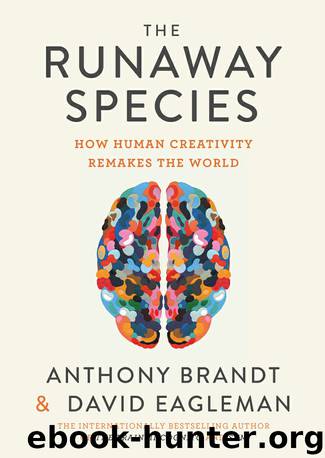The Runaway Species by David Eagleman

Author:David Eagleman
Language: eng
Format: epub
Publisher: Catapult
Continuum Innovation’s prototypes for the skin-smoothing laser
It’s not easy to foresee which solution will win, so having a spectrum of options from the ordinary to the radical is key. During the early days of cash machines, customers often felt vulnerable withdrawing money in public places. Wells Fargo bank called in the design firm IDEO to help. IDEO tried out many ideas, including pricey attachments such as periscopes or video cameras.13 But their eventual solution was stubbornly ordinary: a fisheye mirror, similar to those used by truck drivers. The mirror gave ATM users a panoramic view of the street behind them, allowing them to assess their surroundings. It’s tempting to conclude that Wells Fargo didn’t need an innovation firm to come up with the idea of sticking mirrors on an ATM, but by virtue of exploring different distances, IDEO was able to determine the optimal solution.
Having a wide funnel of ideas at the beginning is critical to the process, and the length of the funnel can be shortened by iterating rapidly. Consider the research and development arm of Google, called X. In order to briskly design and filter new products, X developed “Home” and “Away” teams. When Google came up with an idea for wearable computing – Google Glass – the Home team was tasked with quickly creating a working model. Using a coat hanger, a low-cost projector and a clear plastic sheet protector as a screen, the Home team built the first mock-up of Glass in one day. The job of the Away team was to rush out to a public space like a shopping mall and get as much feedback from potential customers as they could.
An early model of Google Glass weighed 8 pounds – it was more of a helmet than a pair of eyeglasses. The Home team thought they had hit pay dirt when they got that weight down to less than that of an average pair of spectacles. But that wasn’t enough. The Away team found out that it wasn’t just the weight – it was where the weight fell. Users didn’t like too much pressure on the bridge of their nose. So the Home team figured out how to shift the weight to the ears. Through the symbiotic process of idea generation and filtering, Project Glass iterated quickly through multiple versions of their project, all the way to a sleek, working, first-of-a-kind product that hit the market in 2014.
But even this version got filtered out by Google. There were insurmountable privacy concerns with the idea, mostly pivoting on the fact that bystanders didn’t want to be videoed. Abandoning Glass didn’t harm the Google enterprise, though: the engineers and designers went on to other teams, utilizing what they’d learned on other projects. In the end, Google Glass was just one of many fruits on the company’s tree, and it wasn’t the best one. Google had plenty of others, so they weren’t afraid to drop what wasn’t working.
Generating ideas and trashing most of them can feel wasteful, but it’s the heart of the creative process.
Download
This site does not store any files on its server. We only index and link to content provided by other sites. Please contact the content providers to delete copyright contents if any and email us, we'll remove relevant links or contents immediately.
| Administration | Assessment |
| Educational Psychology | Experimental Methods |
| History | Language Experience Approach |
| Philosophy & Social Aspects | Reform & Policy |
| Research |
The Art of Coaching Workbook by Elena Aguilar(48426)
Trainspotting by Irvine Welsh(20119)
Twilight of the Idols With the Antichrist and Ecce Homo by Friedrich Nietzsche(17738)
Fangirl by Rainbow Rowell(7874)
Periodization Training for Sports by Tudor Bompa(7361)
Change Your Questions, Change Your Life by Marilee Adams(6687)
This Is How You Lose Her by Junot Diaz(5830)
Grit by Angela Duckworth(4761)
Red Sparrow by Jason Matthews(4720)
Asking the Right Questions: A Guide to Critical Thinking by M. Neil Browne & Stuart M. Keeley(4628)
Paper Towns by Green John(4193)
Room 212 by Kate Stewart(4138)
Ken Follett - World without end by Ken Follett(3993)
The Sports Rules Book by Human Kinetics(3616)
Housekeeping by Marilynne Robinson(3443)
The Motorcycle Diaries by Ernesto Che Guevara(3364)
Exercise Technique Manual for Resistance Training by National Strength & Conditioning Association(3319)
Introduction to Kinesiology by Shirl J. Hoffman(3318)
Double Down (Diary of a Wimpy Kid Book 11) by Jeff Kinney(3303)
